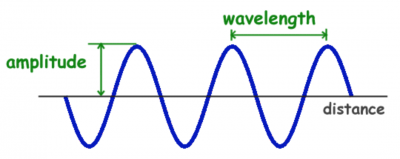Ch7 Lec 1
(4/20/20, bes)
Greetings...and welcome to Chapter 7!
- Do you recall that last chapter titled "Thermochemistry" was an introduction to the larger field called Thermodynamics...and that Chem-312 is a semester long course on "thermo" that all chem/biochem students will take with me (bes). Well, chapter 7 is similar. The "electronic structure of the atom" is described by "quantum theory"...and Chem-322 is a semester long course titled Quantum Mechanics, also taught be me. So these two chapter are near and dear to my heart, but we only skim the surface of these topics in gen chem.
- There is a lot of information in this chapter, so again stick with me and focus on these lecture notes. I do want you to skim the section, but as it is most important for you to understand the topics that i highlight in these notes.
ps. reminder there is a WA from Ch6 due on Tues at 5 pm.
Sec 7.1: From Classical Physics to Quantum Theory
Whether you took physics in high school or not, you are aware of concepts such as speed (miles/hour), acceleration, gravity...and maybe a little related math. These introductory physics topics are often highlighted with examples of falling apples (Newton), throwing baseballs, hitting billiard balls ("pool"), or launching rockets. A common theme of all these topics is that there is a "mass" and if you put energy into it, then it moves; sometimes it transfer it energy to another similar object (like in billiards) and sometimes you just want to know where the ball or rocket will end up if you throw/launch it at a certain angle to the ground. All of these introductory physics topics do an awesome job at explaining the things around us and even does a great job with the motion of planets and our entire solar system (Astronomy <-- a subfield of physics). All of these concepts fall under the heading of "classical mechanics"...with the term mechanics meaning how things move.
As humans became aware of atomic/molecular structures (1800s) we needed a way to describe their behavior very much like Newton described the behavior of an apple falling from the tree. When early day scientists/physicist used "classical mechanics" to describe the behavior of atoms and molecules, these theories often did not describe their behavior well. It is sometime said that classical mechanics "failed" to describe atomic systems, but this is way too harsh...side note: i hope that all of you know that there are 2 main types of "heads" on a screw...flat and cross (aka Phillips head). If you need to remove a Phillips head screw and you use a flat-head screwdriver, is it fair to say that the flat-head screw driver "failed" at removing the screw or is it better to place blame/error on the user...ie don't use a flat-head screwdriver to remove a Phillips head screw!! In this analogy, classical mechanics is the flat head screwdriver used to work with all flathead screws and when the Phillips head screw came along, we just needed to "invent" a new type of screwdriver...this new type of screw drive is "quantum mechanics."
"Things" well described by classical mechanics are usually particles/physical objects. There is a completely different area of physics that deals with light (aka. radiation) and waves, but this has nothing to do with classical mechanics. It turns out that this new quantum mechanics (our new type of screwdriver) describes atomic sized "things" as waves and not particles...so this introductory section introduces you to the properties of waves without much introduction.
Figure 7.2 (book) has a move descriptive version of the above diagram describing the properties of a wave that will be used later to in quantum mechanics.
- wavelength (λ)<--this is a physical distance with units of meters (m) or nanometers (1 nm = 1e-9 m).
- amplitude <--this is not as critical to understand as wavelength, but you should get the idea of amplitude from the figure...units are usually "arbitrary units" (au).
What is not shown in the figures is the property of "frequency" (ν) and the term "speed of light" (c). Physics had already described waves using these properties of λ, ν, and c and formed the following relationship:
- ν=c/λ
- so, given any two variables you can calculate the third...see example 7.4 in your text. Note that in order to do this type of calculation you will most likely need to use the "exponential" function (EE) on your calculator to input numbers. More on this later in lab.
Sec 7.2: The Photoelectric Effect
Skim this section:
Take home message: Max Plank (~ 1900) showed the there was a relationship between the energy (E) of light and the frequency(ν) of light, E ∝ ν , where this funny symbol ∝ means "...is proportional to..." and the proportionality constant is now called Plank's constant, h.
- E = h ν and since ν=c/λ, then E = h c/λ...more in lab.
END Monday lecture...
